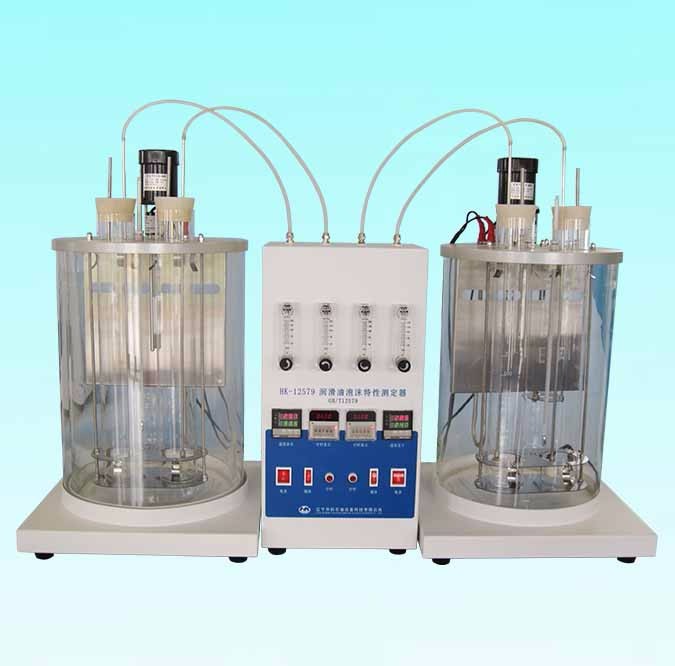Influencing Factors and Evaluation Method of Lubricating Oil Antifoaming Property
Mechanical lubrication systems are mostly lubricated in a cyclic manner. Lubricating oils constantly flow and circulate under the action of oil pumps in the lubrication system. When the lubricating oil flows in contact with air and is violently agitated, it is possible to mix the air into the oil to generate foam.
Foaming in the lubricant can have a number of effects on use. If these foams cannot be eliminated in time, the cooling effect of the lubricant will be reduced, the pipeline will produce air resistance, the lubricant oil will be insufficient, the wear will be increased, the oil spill from the fuel tank, and even pump pumping will occur. Therefore, it is required that the lubricating oil have good anti-foaming properties and should be promptly eliminated after the occurrence of the foam so as to ensure the normal operation of the lubricating oil in the lubricating system.
First, the bubble generation and harm
Blistering is also a common phenomenon in everyday life. If soap is put into the water and stirred, it will produce a regular foam. This is because soap is a foaming agent. When the water is stirred, the air is mixed into the water and surrounded by a water film. The protection of the water film by the soap (which is also a surfactant) makes the water film firm. It is not easy to break, so it produces a lot of stable foam.
At atmospheric pressure, about 9% of its volume of air is dissolved in mineral oil. The amount of air dissolved in the lubricating oil increases as the pressure increases.
When the pressure is reduced, excess air is rapidly separated from the oil to achieve a new balance. But the separated air
When it is surrounded by an oil film and the oil film is not easily broken, foam will form. Part of the foam generated in the internal combustion engine lubricating oil is due to this condition.
Another source of bubbles is the mechanical agitation of the lubricating oil in contact with air. During the operation of the lubrication system, the air is stirred into the oil to generate foam due to violent stirring and splashing, and when the oil contains a surfactant such as a clean disperser, bubbles that are difficult to disappear are easily generated. In particular, the foaming phenomenon of diesel oil is more common.
When aviation lubricating oil is working in the lubrication system, the capacity of the oil tank is small, and the lubricating oil needs to dissipate the heat of the high-speed running bearing. Therefore, the lubricating oil has large flow and severe circulation, and often generates a large amount of foam. When these bubbles can quickly disappear or produce little foam, there will be no impact on the turbine engine. If there is a lot of foam, and it is not easy to disappear, it may give adverse effects on the transmission of energy and oil supply, or even failure.
When lubricating oil foams in use and hardly disappears, it usually has the following hazards:
1 Increase the volume of lubricating oil, overflow the tank, cause oil loss or cause fire and other unsafe factors;
(2) Increase the compressibility of lubricating oil and impede the supply of oil by the oil pump, resulting in a decrease in the pressure of the oil supply, resulting in insufficient oil supply, and influencing the lubrication to cause wear or burn-out of the bearing pad;
3 The large amount of air contained in the oil affects the cooling effect of the lubricant and the cooling effect on the machine;
4 Increase the contact area of lubricating oil and air to accelerate the oxidative deterioration of the oil.
Second, the factors that affect the anti-foaming properties of lubricating oil
Foam is a dispersion of gas dispersed in a liquid medium. The tendency of the liquid to foam and the stability of the foam are closely related to the composition of the liquid and also to the temperature of the liquid. The bubbles produced by a pure liquid are not stable, and if a liquid contains a small amount of a polar substance such as a surfactant (foaming agent), the bubble generated by the liquid will not disappear for a long time.
The surfactant can make the lubricating oil produce more stable foam, because the lubricating oil contains such substances will increase the strength of the bubble film, so that the bubble film is not easy to break. Polar materials with long-chain alkyl groups can form aligned molecular layers. These oriented long-chain molecules have large mutual attraction. When the bubble film contains a surfactant, the film wall becomes tougher and less likely to break, resulting in a stable bubble film.
After the temperature rises, the molecular motion in the bubble film increases, the suction force between them decreases, and the foam easily breaks.
Within a certain viscosity range, the lubricating oil has the highest foaming tendency and foam stability. Too much or too little viscosity will reduce the foaming tendency and foam stability. Since the viscosity is small, the liquid that forms the bubble film is easily lost, and the bubble wall tends to be thin, resulting in the collapse of the bubble. When the viscosity is too large, bubbles do not easily form, and even if bubbles are formed, it is difficult to float to the surface.
The two factors of temperature and viscosity are related to each other. For lubricating oils with lesser viscosity, the viscosity becomes smaller when the temperature rises, and both the foaming property and the foam stability are decreased; for the more viscous lubricating oil When the temperature rises, the viscosity drops to a range suitable for the generation of bubbles, but it tends to increase the bubble formation tendency.
Third, the lubricant anti-foaming evaluation method
The anti-foaming properties of lubricating oils are evaluated based on the tendency of the oils to form foams and the stability of the foams. The evaluation method is the property measurement method for lubricating oil foam (GB/T12579-90), and the related equipment recommends the YT-12579 anti-foam tester manufactured by Shanghai Yutong Instruments and Meters Factory: Inject approximately 200 mL of oil into a long barrel of 1000 ml. 94 ± 5ml/min flow rate of air into the oil, after 5min note the volume of the foam volume in the Jane foam, which is the tendency to foam (FT), the most tube statically set for 10min and then record the foam volume again, namely foam stability (FS). The test oil temperature was 24°C and 93°C. Anti-foaming lubricants have a low tendency to foam, and foam stability is low.
The oil temperature of the test can also be determined according to needs. The result can also be used to record the high foaming height (cm), or the oil height and the defoaming time (s), and calculate the foaming coefficient (bubble height/oil height). Indicated. Lubricants have a small foam height, a small foaming coefficient, a short defoaming time, and good anti-foam properties.


